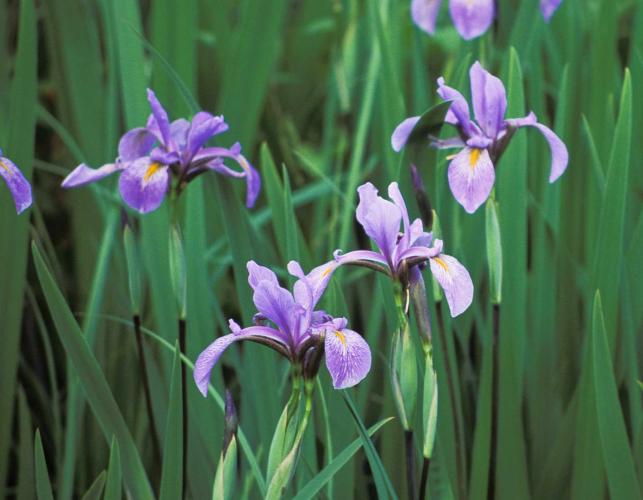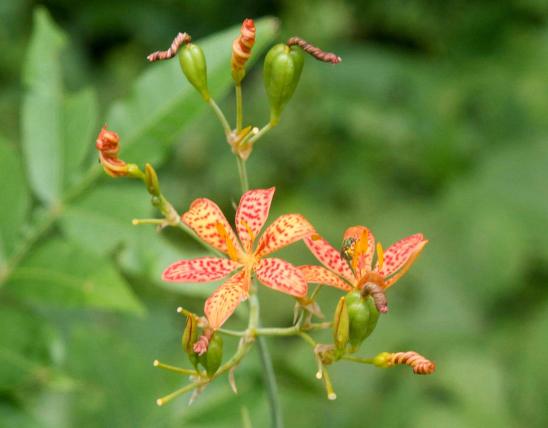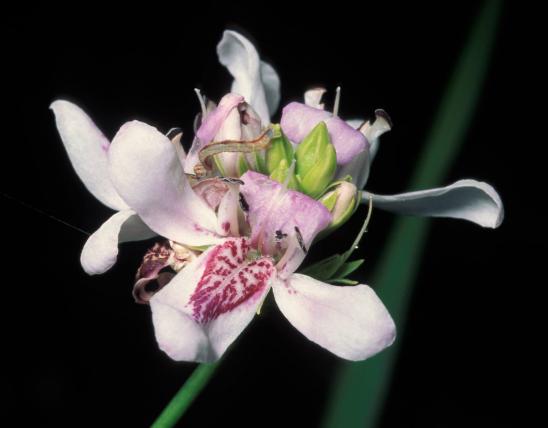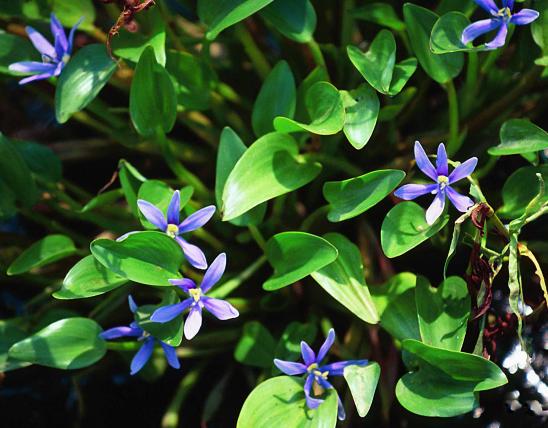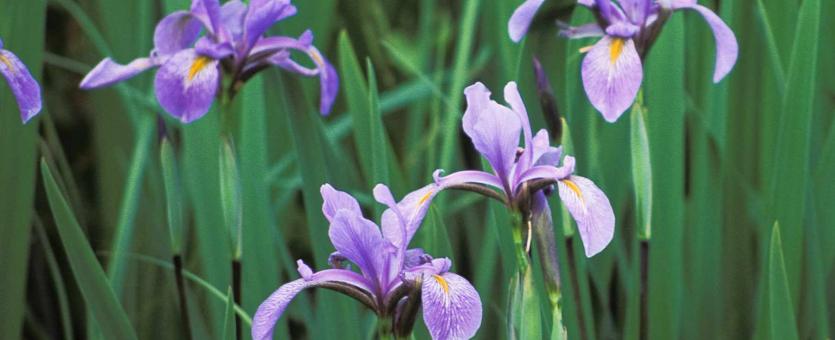
Herbaceous perennials growing from rhizomes. Flowers grow near the top of stems. The 3 sepals are descriptively called “falls”; the 3 upright petals are the “standards.” Color varies from nearly white to deep violet, sometimes in a veined pattern. Blooms May–July. Leaves mostly basal, straplike, to over 2 feet long, folded along the midrib.
Similar species: Of the 10 irises that grow out of cultivation in our state, this is the most common of the 4 that are native to Missouri; the rest are escapes from cultivation.
Height: to 3 feet.

Scattered statewide; principally in northern and central Missouri.
Habitat and Conservation
Occurs in a wide variety of wetland sites, including marshes, wet meadows, swamps, river bottoms, sloughs, ditches, bottomland prairies, edges of sinkhole ponds, and in shallow water. As a native garden subject, this iris needs full sun and a wetland situation, making it especially good for water gardening. Of our 4 native irises, this has the widest distribution, but drainage “improvements” are eliminating its habitat.
Human Connections
Irises have had a long history in cultivation—as ornamentals, for perfumery and culinary flavoring, and for medicinal uses—even dating back to ancient Egypt. Note: There have been reports of some people developing a mild skin rash after handling these plants.
Ecosystem Connections
Bumblebees collect nectar from irises, cross-pollinating them in the process. Few mammals eat this species because the plant irritates the digestive tract. As with other plants that colonize wetlands, they play an important role in cleaning water and stabilizing soils.
